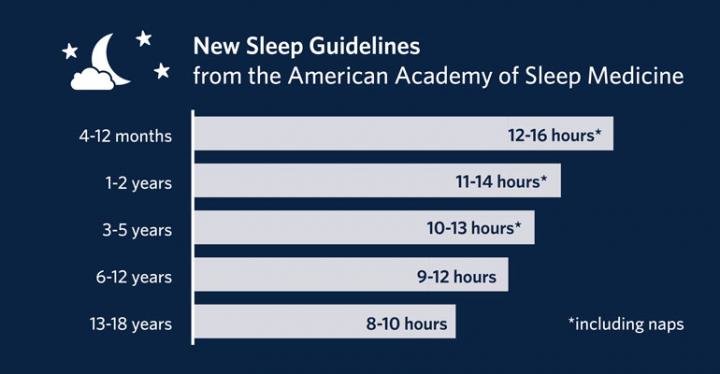Helping children improve their sleep
Sleep hygiene, which includes preparing a cool and quiet environment for sleeping or reading before going to bed to help children relax, is increasingly popular among parents who seek to ensure their children a good night's rest.
Routines are a fundamental process for sleep hygiene
Sleep hygiene, which includes preparing a cool and quiet environment for sleeping or reading before going to bed to help children relax, is increasingly popular among parents who seek to ensure their children a good night's rest.
Made in collaboration with our partners from esanum.it
Good sleep hygiene gives children the best chance of resting properly and healthily. Effective sleep is essential to promote the growth and development of children. Research suggests that children who do not sleep well are more likely to have problems at school and develop more slowly than their peers who do sleep well. The American Academy of Sleep Medicine recommends the following hours of sleep, depending on the age group: 4-12 months: 12 to 16 hours, 1-2 years: 11 to 14 hours, 3-5 years: 10 to 13 hours, 6-12 years: 9 to 12 hours, 13-18 years: 8 to 10 hours. The following illustration is owned by The University of British Columbia, where researchers have conducted a review of the latest studies on sleep hygiene.
Sleep hygiene practices have been extensively described in the literature. There is much less clarity about the relationship between methods and results, and about which intervention approaches are effective. A recent review published in Paediatric Respiratory Reviews describes the various elements of pediatric sleep hygiene in the literature. Evidence from different countries and cultures has been systematically analyzed. The review focused on 44 studies from 16 countries, dividing the data by age groups: infants and young children (four months to two years), preschool children (three to five years), school-age children (six to 12 years) and adolescents (13 to 18 years). These studies involved about 300,000 children in North America, Europe, and Asia.
Some methods have been found to be effective for young children and school-age children. Regular hours, reading before going to bed, quiet bedroom and autonomy (especially the opportunity to go to sleep alone and go back to sleep alone if they wake up in the middle of the night) are the best practices to facilitate rest in these age groups. Research has shown that having a fixed bedtime is also important for older children and adolescents.
Extensive evidence shows that it is necessary to limit the use of technology just before going to bed or during the night. Studies in Japan, New Zealand, and the United States have shown that the more children use electronic devices just before they sleep, the less they rest well. Playing video games or watching exciting movies before going to sleep often increases the time it takes to fall asleep, especially in school-age children.
The review highlights the importance of routine in general. A study in New Zealand showed that family dinner time was critical to helping teenagers sleep.
Further studies are needed to systematically examine the effect of certain sleep hygiene factors on sleep quality. At the moment it is reasonable to recommend that parents set the time of bed, even for older children, and daily habits such as sitting down for dinner all together at a fixed time, reading before going to bed and limiting as much as possible the use of video games, smartphones, tablets, and no television before sleeping.
Source:
W.A. Hall, E. Nethery, What does Sleep Hygiene have to offer Children's Sleep Problems?, Paediatric Respiratory Reviews (2018),doi: https://doi.org/10.1016/j.prrv.2018.10.005
